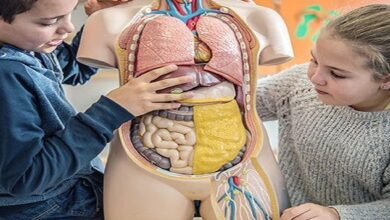Immune System | for Parents – Nemours KidsHealth

Immunity
I have heard many stories from history and traditional peoples about the use of plants, fi re, air, and water to help the body defend itself physically — and also the reverse. Let’s listen to a few. Frenchwomen who packed lavender essential oil for the perfume trade in the seventeenth century didn’t catch typhoid fever, and it soon became evident that lavender, just by handling it, could protect against the disease. The French are still known to use a great deal of lavender eau de cologne.
The Layout of the Immune System
Immunity is not just a matter of balance, of germs versus our particular micro flora and whether they can cope with invasion on a physical level. Looking at it in this way initially, however, can help us to understand the modern view of the immune system.
The immune system itself is a wonderful, subtle, and powerful system in which bone marrow, spleen, liver, thymus, tonsils, appendix, stomach, and adrenal glands have important roles to play. The system is intelligent and sensitive: for instance, chemicals issue from damaged cells in a form that allows them to pass through blood capillary walls and “eat” microbes by a process called phagocytosis. Their numbers increase according to the condition, as they are able to determine the severity of the situation.
Current Immune Problems
One of the current worldwide — but mainly Western — immunity problems stems from the overuse of antibiotics in animal feeds. These drugs enter the human food chain and weaken our immune systems by killing valuable flora. Doctors now recognize this danger.
The number of patients who contract food poisoning via contaminated meats and dairy products is constantly increasing. They cannot be treated with the available antibiotics because they have built up resistance via their food intake. Cases of food poisoning are rising by thousands each year.
Automatic Defenses
We have many automatic and natural defense systems for dealing with viruses, bacteria, fungi, and other foreign bodies. It is generally believed that viruses are different from bacteria in that bacteria operate outside cell walls while viruses choose a host cell in order to replicate themselves. Some can mutate — for instance, HIV dodges the immune memory system in order to survive. With all viruses there can be the added problem of secondary bacterial infection.
Although modern drugs can deal with fungal or bacterial infections, they used to be unable to invade viruses or to penetrate the walls of cells inhabited by viruses. However, some are now able to overcome certain viruses’ sophisticated defense systems.
Antibiotics
Once reserved for life-threatening situations, antibiotics have now become abused substances, generally via the dairy and meat food chain. Repeated courses of antibiotics can disturb the immune system so much that they can become ineffective. Physicians have become much more aware of this problem, and avoid prescribing them where possible.
Repeated use of antibiotics in children, toddlers, and babies can lead to severe conditions, which may include cases of unresolved tonsillitis (often resulting in surgery to remove the tonsils), chronic respiratory problems, skin disorders, middle ear infections, allergies, and hyperactivity. These are problems that, originating in childhood, may be reflected in a difficult and sickly transition into puberty, with deeper problems like myalgia encephalomyelitis (chronic fatigue syndrome), cancer, and other virulent immune disorders occurring in adulthood.
Understanding the conjugation of verbs is essential in mastering a language. It involves various verb forms and tenses, which convey the timing and completion of actions. Additionally, mood and voice variations add further complexity to verb conjugation. The nuances of shabd roop encompass the subtleties of language, requiring attention to detail and practice for fluency





